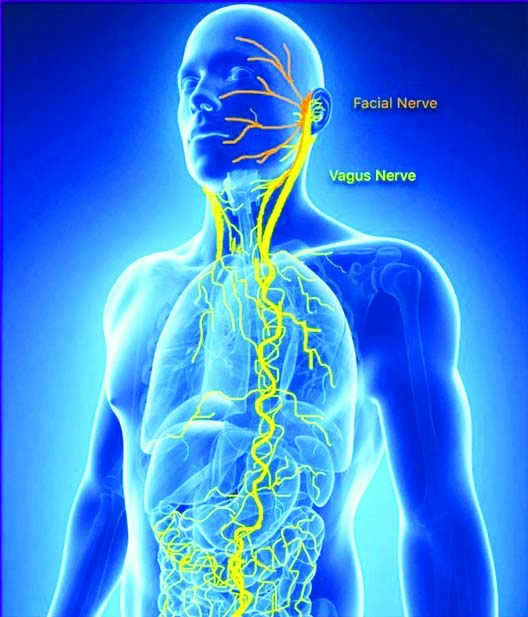The Meadows to offer Mind & Heart: A Mindful Path To Wholehearted Living
The Mind & Heart Workshop helps participants to cultivate greater awareness and compassion for their self-defeating patterns of thinking, feeling, and behaving — which are critical steps in making meaningful and lasting change.
This workshop is an innovative approach to healing the pain of the past by mindfully and wholeheartedly stepping into the present. Based on years of scientific research and clinical experience, Dr. Jon Caldwell, D.O., Ph.D., has developed a unique workshop that uses time-honored mindfulness techniques to bring gentle awareness, acceptance, and compassion to the memories, beliefs, and emotions stemming from difficult life experiences. Participants learn how early attachment relationships with caregivers and family members have shaped how they relate to themselves, others, and the world. Participants cultivate greater awareness and compassion for their self-defeating patterns of thinking, feeling, and behaving—which are critical steps in making meaningful and lasting change. Through rich instruction and therapeutic exercises rooted in mindfulness and loving kindness, participants learn practical ways to heal past wounds so that they can more fully live from their truth and enjoy genuine intimacy.
Workshops run 8:30 a.m. to 4:30 p.m., unless otherwise noted. The schedule is flexible, accommodating the group process.This workshop is scheduled on the following dates in 2015: September 7-11 and October 26-30.
For more information or to enroll, please contact us at 800-244-4949. www.themeadows.com.
Alcoholism Medication may help treat Meth Addiction
The drug naltrexone, used to treat alcoholism, may also be useful in treating methamphetamine addiction, a small new study suggests.
Researchers at the University of California-Los Angeles found naltrexone decreased the desire for meth and the pleasure derived from using it, UPI reports.
The study included 22 men and 8 women who used meth an average of three or four times a week.
Half of the participants were given naltrexone on days three and four of a four-day hospital stay, while the other half received a placebo daily. After 10 days, they spent another four days in the hospital. Those who had been given naltrexone took a placebo for four days, while those who had been given a placebo received naltrexone.
On the last day of each hospital stay, participants were given a dose of meth. After three hours, they were asked how they felt and whether they wanted more of the drug. Those who took naltrexone had less desire for meth, and said they enjoyed it less when they took it.
“The results were about as good as you could hope for,” researcher Lara Ray said in a news release. The study appears in the journal Neuropsychopharmacology.
Larger clinical trials of naltrexone as a treatment for meth addiction are now being conducted with funding from the National Institute on Drug Abuse.
Marijuana Edibles being Transported Illegally across State Lines
Law enforcement officials are reporting an increase in marijuana-infused edible products being transported illegally across state lines for resale.
Edibles resemble candy or home-baked products, and often have no smell that indicates they contain marijuana, The New York Times reports. Missouri troopers confiscated 400 pounds of commercially made marijuana chocolate in February. New Jersey state police seized 80 pounds of homemade marijuana sweets. Oklahoma officers seized about 40 pounds of commercial marijuana products, including taffy-like “Cheeba Chews” and bottles of marijuana-infused lemonade.
In Colorado, where recreational marijuana is legal for adults 21 and over, edible marijuana products have become a popular alternative to smoking marijuana. Adults 21 and over can legally purchase marijuana edibles at state-licensed stores. Marijuana is now available in products ranging from candy to soda and granola. The amount of marijuana in edible products varies widely. In some cases, products contain levels so high that people experience extreme paranoia and anxiety.
The high produced by edible products comes on more slowly than smoked marijuana. Inexperienced users may consume too much, causing severe impairment. Some experts are concerned that marijuana edibles smuggled into other states may appeal to teens.
Colorado health officials are trying to find a way to prevent people from overdosing on marijuana edibles. The products have been implicated in two suicides and one murder in the past 13 months. Almost five million edibles were sold in Colorado stores last year.
Marijuana edibles are also legal in Washington state, and will soon be legal in Oregon and Alaska. Edible products are also available to medical marijuana users in at least six of the 23 states with medical marijuana programs, the article notes.
Decline in cigarette smoking
A new report by the Substance Abuse and Mental Health Services Administration (SAMHSA) shows from 2003 to 2013 levels of past month (current) underage cigarette smoking among those aged 12 to 17 have dropped significantly in 49 out of 50 states.
The only state that did not experience a statistically significant decline was Utah which has traditionally has one of the lowest levels of underage cigarette smoking in the nation.
Overall the national level of current underage cigarette smoking dropped sharply from about 12.6 percent in 2003 to less than 6.1 percent in 2013.
“The decline in underage cigarette smoking during this period is encouraging and shows that spreading the word to young people about the risks from smoking can make an enormous positive difference,” said Fran Harding the director of SAMHSA’s Center for Substance Abuse Prevention.
“Unfortunately, far too many young people still use tobacco products. According to the Surgeon General if current trends continue, 5.6 million American youth currently under age 18 will die prematurely during adulthood because of their smoking. This is why every segment of the community must reach out to young people about the importance of not smoking, or quitting smoking if they have started.”
Studies have shown that adolescents’ perception of risk regarding smoking can influence their behavior toward it. The more likely an adolescent is to associate cigarette smoking with a great health risk, the less likely the adolescent is to smoke cigarettes.
However, increases in e-cigarette and hookah use are offsetting declines in use of more traditional products such as cigarettes. A recent study published by the Centers for Disease Control and
Prevention shows that current e-cigarette use (use on at least 1 day in the past 30 days) among high school students increased from 4.5 percent in 2013 to 13.4 percent in 2014, rising from approximately 660,000 to 2 million students.
Among middle school students, current e-cigarette use more than tripled from 1.1 percent in 2013 to 3.9 percent in 2014—an increase from approximately 120,000 to 450,000 students. The report concludes that because the use of e-cigarettes and hookahs is on the rise among high and middle school students, it is critical that comprehensive tobacco control and prevention strategies for youth focus on all tobacco products, and not just cigarettes.
SAMHSA manages several grant programs that states can use to prevent underage tobacco use, including the Substance Abuse Prevention and Treatment Block Grant (SABG) and the Partnerships for Success grant program.
SAMHSA also administers the Synar program, a federal and state effort which helps states enforce their laws prohibiting the sale or distribution of tobacco products to individuals under the age of 18. States also must conduct annual, random, unannounced inspections of over-the-counter tobacco outlets and vending machines to ensure compliance with the law. States must comply with the Synar Amendment in order to receive their full SABG funds. The most recent Synar report shows that 9.6 percent of inspected retail outlets illegally sold tobacco products to youth at any time in 2013. That number is significantly below the 20 percent target rate set by the program, and far lower than the highest reported state retailer violation rate of 72.7 percent when the Synar program was established 16 years ago.
































